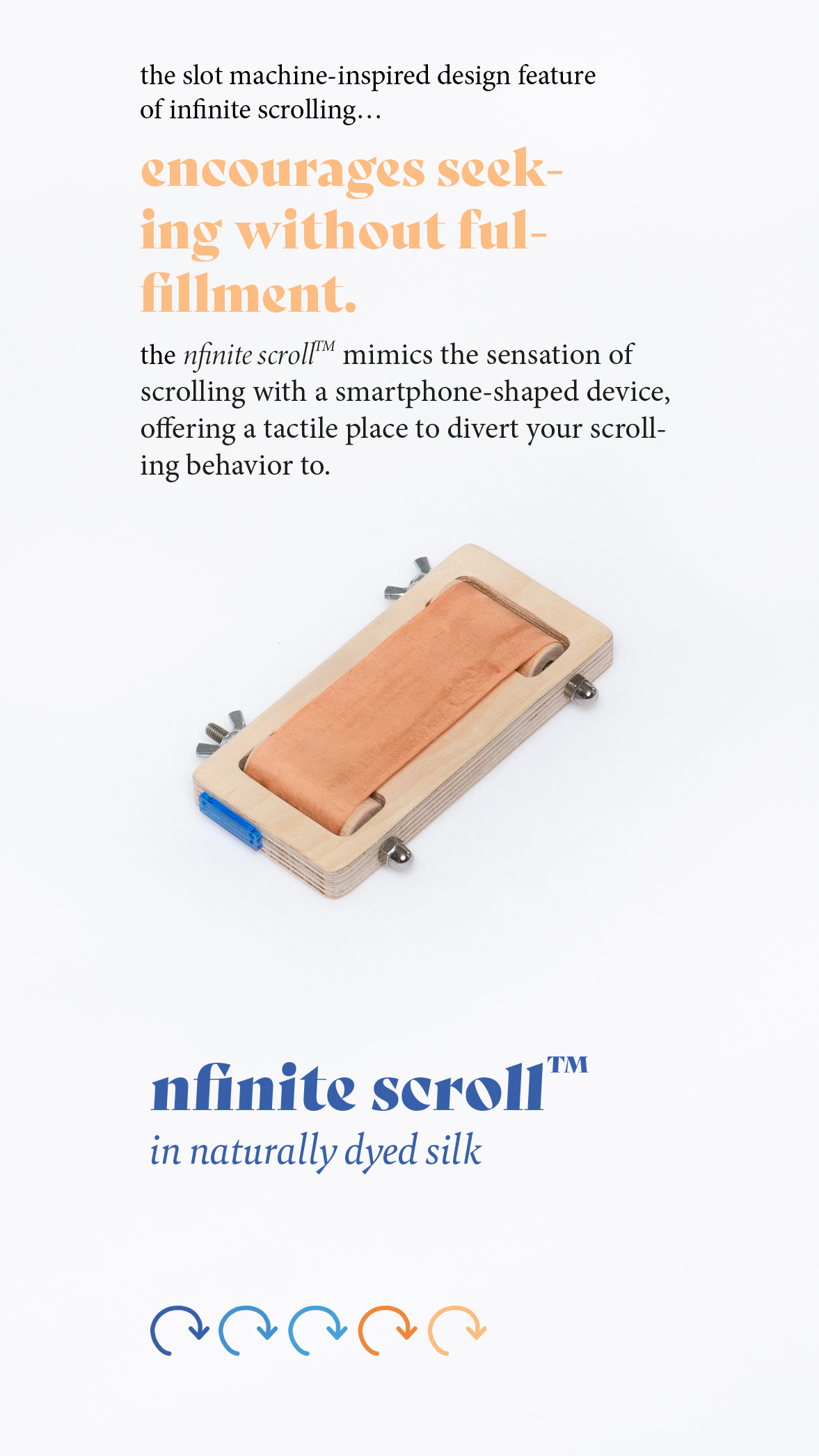Attention Calibration Devices
2021
The blue vision™ protective shield, nfinite scroll™ device, and ad Bloc™ goggles aim to lightheartedly add friction to our use of technology that is ever more optimised for frictionless use and addiction.

Business models based on the commodification of users’ attention, like those used by free social media sites, have led to an atrophying of our ability to focus, be present, and even ask how our own values might be supported by technology, rather than undermined by it.
As things are now, the design of most ads-supported platforms (and even those that are not) optimize for longer engagement over anything else.
The main tactics used in persuasive design to prey on psychological weaknesses of users are identified by the Center for Humane Technology as 1) Making the trivial seem urgent; 2) Encouraging seeking without fulfilment; 3) Forcing us to multitask; 4) Weaponizing fear and Anxiety; 5) Encouraging constant social comparison; and 6) Telling us whatever we want to believe1.

The blue vision™ protective shield, nfinite scroll™ device, and the ad Bloc™ goggles aim to materially combat and prod at the first three of these tactics, respectively. They ask how can we add friction to using technology that is ever more optimised for frictionless use and addiction? Is it ridiculous to place physical rituals between us and these technologies, or to try to create a different neurological experience than that which they are designed to trigger?

These objects do not aim to argue against what our current internet has brought us at its best. However, at its worst, the internet has accelerated extractive consumerism, altered political and social landscapes, allowed for people to subscribe to different realities, and shortened attention spans. Our collective energizing around mitigating climate change relies on a reckoning with the attention economy and pushing for legislation that limits the amount technology companies can optimize their platforms for ever-increasing engagement, rather than functionality, resource use efficiency, or how much they facilitate human goals.
These critical products may gain exposure on social media, namely Instagram, where they will be promoted among kin: decontextualized and eerily light-hearted. They also aim to illuminate an irony in products that place the burden of positive behaviour change on the user when private corporations and governments should first be held responsible for examining the ethics of persuasive technology. Sixty per cent of the world’s population is online2 and one third is on Facebook3; the extractive attention economy affects them all.

1. Brain Science, Center for Humane Technology, www.humanetech.com/brain-science.
2. Johnson, Joseph. “Internet Users in the World 2021.” Statista, 7 Apr. 2021.
3. Tankovska, H. “Facebook Users by Country 2021.” Statista, 9 Feb. 2021.